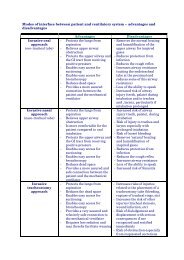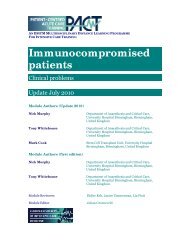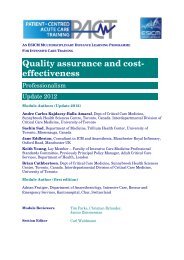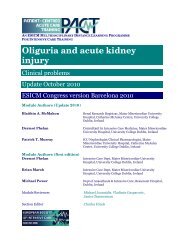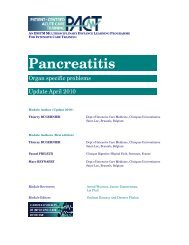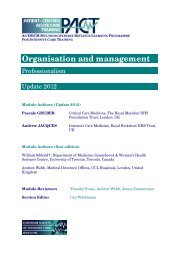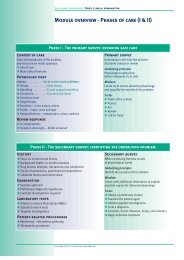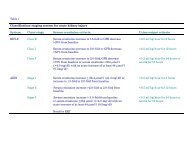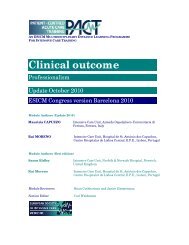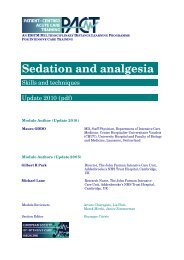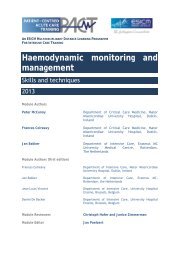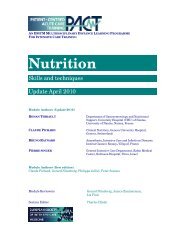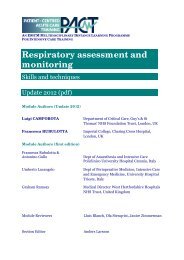Burns injury - PACT - ESICM
Burns injury - PACT - ESICM
Burns injury - PACT - ESICM
Create successful ePaper yourself
Turn your PDF publications into a flip-book with our unique Google optimized e-Paper software.
Over-resuscitation has become a major problem during the last 15 years,<br />
causing organ failure and death. Excessive fluid has been shown to worsen prognosis.<br />
This conclusion has led to the concept of ‘permissive hypovolaemia’.<br />
Avoiding fluid overload<br />
The simplest preventive measure is the prescription of a ‘half Parkland’ formula, i.e.<br />
2 mL/kg/%TBSA instead of 4 mL/kg/%TBSA crystalloids (lactated or acetated<br />
Ringer’s) to initiate resuscitation, and to continue with a permissive hypovolaemia,<br />
aiming at delivering controlled amounts of fluids to compensate for a little more<br />
than the evaporative and exudative losses based on hard indicators of organ<br />
perfusion (see table below).<br />
Lactated or acetated Ringer’s solution is preferred to normal saline as it<br />
carries less risk of hyperchloraemic acidosis.<br />
Fluid administration can be guided by the calculation of the daily evaporative losses<br />
estimated according to the formula: [3750 mL BSA (m2) (% burn/100)], combined<br />
with the clinical observation of signs of inadequate organ perfusion (low blood<br />
pressure and oliguria or anuria). Usually the aim for diuresis is 0.5–1 mL/kg/hr in<br />
adults – see table below. A simple measurement of haemoglobin concentration can<br />
be of guidance, and a concentration >17-18 g/100 mL indicates under-resuscitation.<br />
Objectives of fluid resuscitation in adults (combined fluid and<br />
pharmacological approach)<br />
Mean arterial pressure > 60 mmHg,<br />
Heart rate 60%<br />
Adequate tissue perfusion<br />
- Diuresis 0.5 mL/kg/hr, 1 mL/kg/hr in paediatric patients<br />
- Near normal pH and base excess<br />
- Near normal lactate levels<br />
Warden GD. Fluid Resuscitation and Early Management. In: Herndon DN, editor.<br />
Total Burn Care. 3rd edition. Edinburgh: Saunders-Elsevier; 2007. ISBN:<br />
978-1416032748. pp. 107–118<br />
‘Permissive hypovolaemia’<br />
The most recent iteration of this concept is the ‘Rule of 10’ developed at Fort Sam<br />
Houston (Texas, USA). The authors propose a three-step approach: the 1st step is to<br />
estimate burn size to the nearest 10% TBSA, 2nd step is to multiply this number by<br />
ten to derive the initial fluid rate in mL/hr (for every 10 kg body weight over 80 kg<br />
add 10 mL/h to this rate), and 3rd is to adapt the fluid rate to the signs of organ<br />
underperfusion.<br />
8



